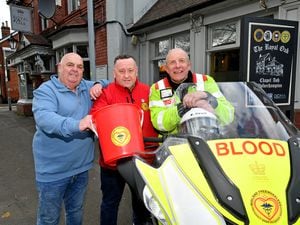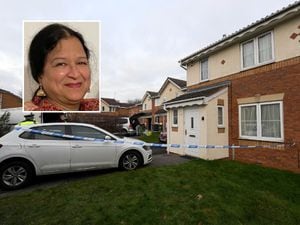The Queen's Jubilee: A moment that changed her life forever and a coronation for the ages
Tucked away in a remote pocket of Kenya, the Treetops holiday lodge was notable in the 1950s for the fact that it could only be accessed by a stepladder.
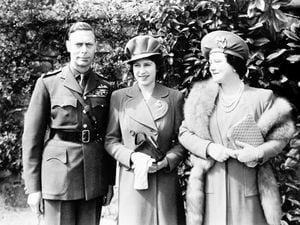
And when a particularly famous guest stayed there 70 years ago, her life would change forever. Because the young mother who was staying there with her husband ascended the ladder as a princess – and climbed down it as the Queen.
Queen Elizabeth II was staying with her husband, the Duke of Edinburgh, at Treetops in Aberdare National Park, when her father, King George VI, died in his sleep.
It should actually have been the King who was on tour in Kenya, but his declining health had forced him to abandon the trip, and Elizabeth and Philip were drafted in as late replacements.
According to Lady Pamela Hicks, the Queen was one of the last to know of her elevation as the news began to filter around rest of the world.
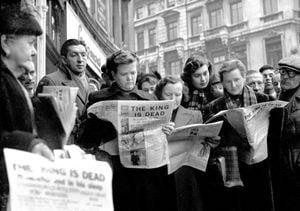
A message had been sent by the British embassy but as it had been written in code it wasn't passed on. But the Queen's private secretary, Martin Charteris, returned to the lodge when a reporter accosted him and started asking about the news.
It fell to Philip's private secretary Michael Parker to discretely clamber into the lodge and attract Philip's attention, without disturbing the Queen.
Lady Pamela said: "Prince Philip is sitting, reading a newspaper, while the princess is in another part of room, at the desk, writing to her father.
"Mike crawls in as he doesn't want the princess to look up and see him so he's crawling out of her sightline and gesturing to get hold of the radio.
"He secretly turns it very, very low and hears all the stations, the same dirge-like music, being very solemn, so it's obviously true."
Parker secretly persuaded the Duke to listen to the radio to hear the news for himself.
"Philip just takes the newspaper and covers his face with it, hides behind it and says: 'This will be such a shock!'"
Lady Pamela said the Duke convinced his wife to go for a walk in the garden, where he told her of her father's death and that she was now Queen.
Lady Pamela added: "As she comes into the room. I think 'Oh, poor girl, her father's died'. So I go over to her, give her a hug and think 'Oh my God, it's the Queen', so I go into a deep curtsey.
"And she says 'I'm so sorry. It means we've all got to go back'. She was only thinking of all of us."
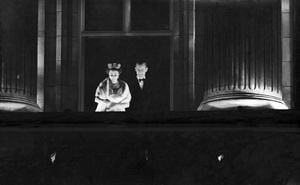
It was this brief conversation which transformed Elizabeth's life from a young naval wife, leading a relatively carefree existence at a rented house in Malta, to a lifetime of public duty.
The early 1950s have been described as being some of the happiest days of the Queen's life. She would spend much of her time in Malta, where Philip was stationed with the Royal Navy, enjoying dinner on the terrace, picnics on the beach, and wandering anonymously around the shops like any other housewife. She had given birth to her eldest son, Charles, in 1948, followed by daughter Anne in 1950, but the children had stayed behind in London when Philip was posted to the Mediterranean.
Maltese photographer Frank Attard captured the royal couple dancing, and also at their home the villa, which is now locked and shuttered.
In a 2015 interview, Mr Attard said: "The Queen had the happiest days of her life in Malta I think.
"Going dancing in the evening, they used to eat outside, go out. People used to come and see them.
"I think those days were happy days for them, especially when Prince Philip was in the Navy here."
Lady Mountbatten, Pamela's mother, also noticed the Queen's apparent sadness at having to return to England and leave her life of relative normality behind.
She said: "It was rather like putting a bird back into a very small cage."

She was the first British monarch since King George I to be outside the country at the moment of succession, and also the first in modern times not to know the exact time of her accession because her father had died at an unknown time.
On her return to the UK, she was greeted by Prime Minister Winston Churchill and other officials at the airport before returning to Clarence House, where the Royal Standard was flown for the first time in her reign.
The coronation, at Westminster Abbey on June 2, 1953, was conducted by Archbishop of Canterbury, Dr Geoffrey Fisher. It was the first coronation to be screened on television, something which Churchill had been fiercely opposed to. The Queen insisted that the cameras should be allowed to cover the ceremony, prompting millions of people to buy or rent television sets for the first time. A total of 20 million people reportedly watched the ceremony, with an average of 17 people crowded round each television set. It was also the first major global event to be screened across the world.
The Coronation was probably more commercialised than any before it, with a plethora of mugs, tea towels and toffee tins all produced to mark the occasion.
The ceremony was attended by peers and political leaders from across the Commonwealth, and thousands of people braved the driving rain to watch the procession make its way through the streets of the capital.
In the weeks that followed, the new Queen drove through every part of London. One of her first public duties was to review Royal Navy fleet at Spithead on the Solent. The Queen was piped aboard HMS Surprise, while the Duke of Edinburgh received the captains of many of the vessels. As Surprise departed the port, the new Queen and her husband took to the saluting platform, where they were greeted by cheering crowds on the quayside.
Much of 1953 was also spent on a whirlwind seven-month world tour, taking in seven countries and 40,000 miles by land, sea and air.
She became the first reigning monarch of Australia and New Zealand to visit those nations, and it was estimated that 75 per cent of the population of Australia saw her.

It was a day those involved would never forget. And, with it being Britain, it rained.
On June 2 1953 Queen Elizabeth II became the 39th Sovereign and sixth Queen in her own right to be crowned at Westminster Abbey, where every coronation for the last 900 years has taken place.
The service took place in the coronation theatre, a specially constructed area at the East end of Westminster Abbey. The term 'theatre' refers to the spectacle and drama in the religious significance, historic association and rich pageantry of the service.
It is estimated 27 million people in the United Kingdom watched the Coronation on television and 11 million listened to the radio broadcast. Around three million people lined the processional route around London and 29,200 troops took part.
Around 8,250 special guests attended the Coronation, representing 73 countries. The ceremony itself went on for three hours.
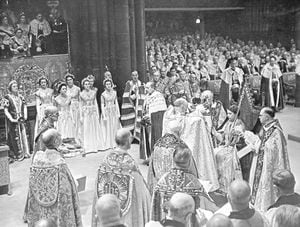
The West Midlands was one of the first ports of call for the new Queen shortly after her accession to the throne.
Her Majesty made three visits to the region in the 1950s – to Stafford in 1955, and on a tour of the Dudley area in 1957. Her first visit was to Shrewsbury in October, 1952, just months after becoming Queen.
During her visit to Stafford on November 2, 1955, Her Majesty and the Duke of Edinburgh rolled up in the town at the end of a day in which she had been touring the Potteries. Crowds lined a two-mile route through the town to a reception at the county buildings.
Thousands more turned out to see the Queen and Duke when they spent St George's Day in Dudley and and North Worcestershire in 1957.
The day began at Hagley railway station and their car then made its way to Halesowen, where her first port of call was the Walter Somers works. There the Queen was presented with gifts for her children: a spade and fork for Prince Charles, and a doll's pram made by Halesowen-based Badham Brothers for Princess Anne.
There were short visits to Oldbury Council House and Rowley Regis, before the Royal party arrived in Dudley , where they were greeted with 5,000 children, who gave the Queen "a deafening welcome."
The Queen took a path between the vast crowds to the Apollo statue in Coronation Gardens. She waved to the crowds from the balcony of the Council House, and told mayor Councillor Sam Danks "It's been a wonderful pleasure to come here". The it was to Brierley Hill, where she visited the Stevens & Williams glassworks, and on to Stourbridge where she was taken on a tour of Mary Stevens Park in an open-topped Land-Rover. She ended her visit at Kidderminster.
June 2 1953 was a particularly cold, damp day – in fact snow fell on the Pennines.
But nothing could deter people up and down the land from holding their street parties, a traditional that will be continued across the UK 70 years on.
Neighbours pinned up the handmade bunting, pulled out the trestle tables and were determined to enjoy a good old knees-up no matter how much it rained.
Members of various communities wrapped up against the unseasonal cold and rallied to lay on parties which the children would remember for a lifetime.
"I recall helping make red, white and blue hats for the children to wear," says Rosina Rowland who grew up in the Midlands and was eight years old in 1953. The streets were full of bunting – all red, white and blue – and there was music, games and laughter throughout the day. All the children received a silver spoon to mark the event."



